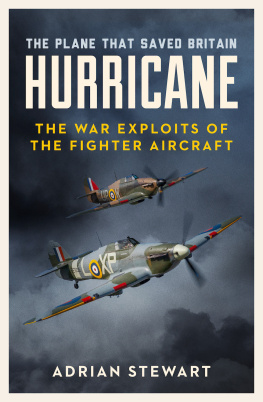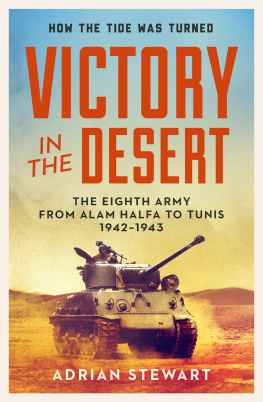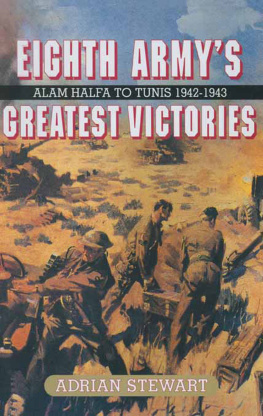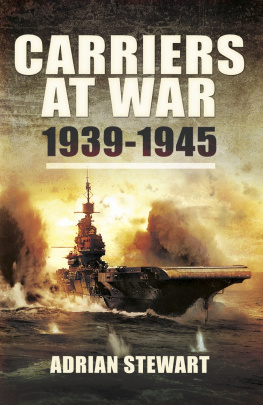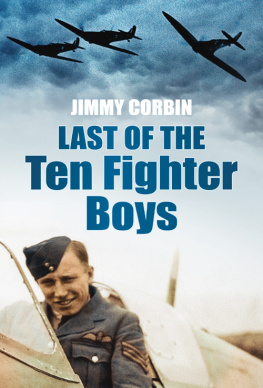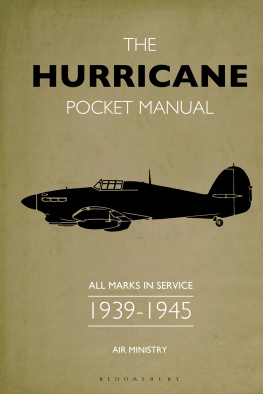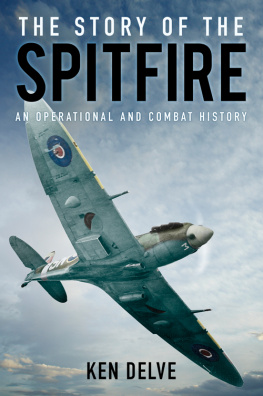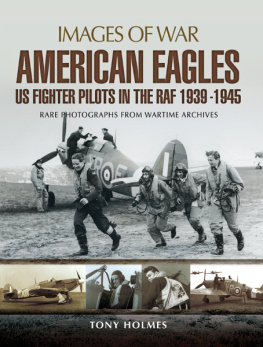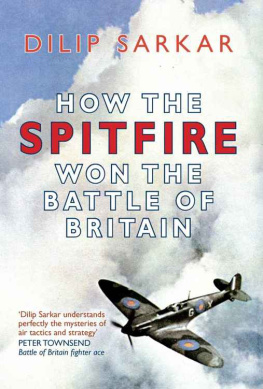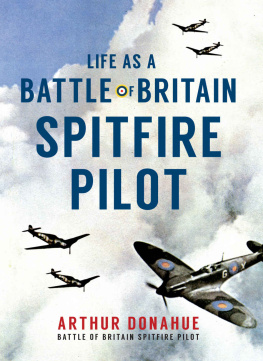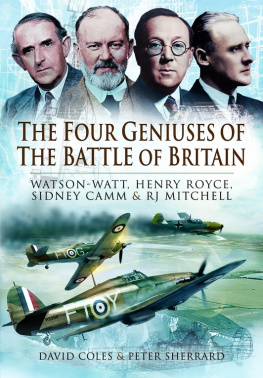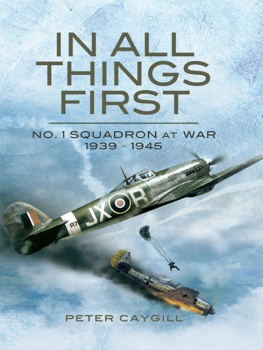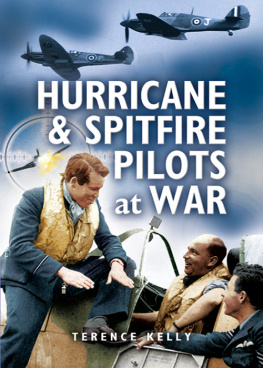Hurricane
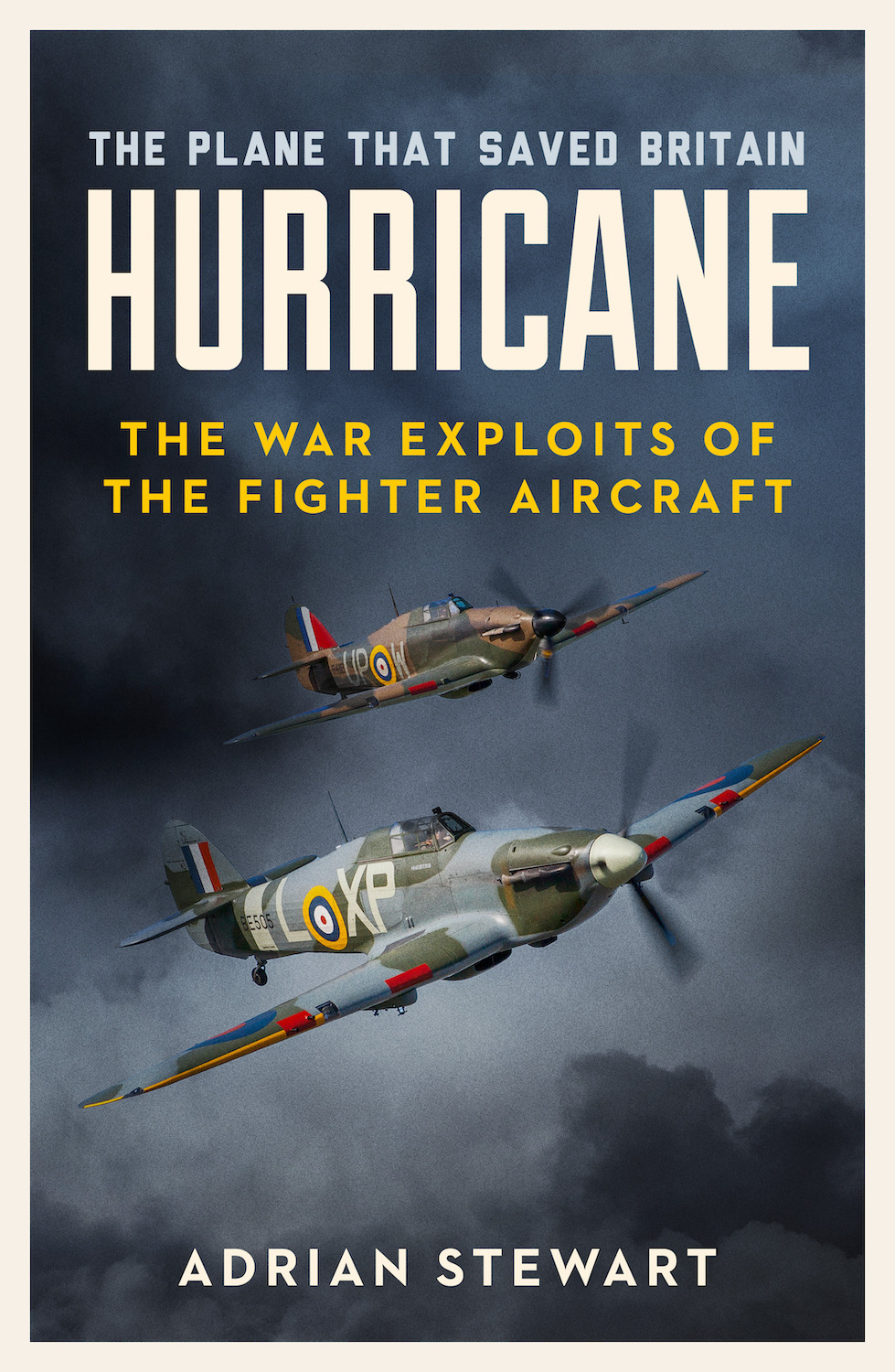
Dedication
To My Wife Janet who didnt interrupt
Chapter One
Creation and Early Campaigns
On 6 November 1935, a small, silver-painted monoplane took off from Brooklands aerodrome, by the famous motor-racing track, on its maiden flight. The pilot, P.W.S. George Bulman, chief test pilot of Hawker Aircraft Limited, was delighted by the trial, though he contented himself with reporting merely that the aircraft flew comfortably. It was then known somewhat curtly as the Interceptor Monoplane or more pompously as the F36/34 Single Seat Fighter High Speed Monoplane, registered serial number K5083 but on 27 June 1936 it received a new official name: Hurricane.
K5083 was designed by Sydney (later Sir Sydney) Camm, who in 1925 became Chief Designer of H.G. Hawker Engineering Company Limited, the privately owned predecessor of Hawker Aircraft Limited, having joined the firm as a draughtsman two years before. Early in 1925, he produced a drawing of a small monoplane fighter to be armed with two Vickers machine-guns and powered by a Bristol Jupiter engine, but the project never proceeded, doubtless because there was a strong belief in high places that the monoplane lacked sufficient structural integrity a belief that arose in September 1912 when two monoplanes had broken up in the air, resulting the following month in RFC pilots being banned from flying military monoplanes. This was never accepted by the Admiralty and lasted only for five months, but the stigma remained far into the future.
However, if Camms monoplane never flew, his biplanes did. Of these perhaps the most famous was the Hart light bomber. This first took to the air in 1928, powered by a Rolls-Royce Kestrel engine round which Camm had designed not only for the Hart but also the Hornet fighter. In early 1930, the Hart joined 33 Squadron and, in the air-defence exercises that year, its top speed of 184 mph some 10 mph in excess of that of any existing fighter made it quite impossible to intercept.
Understandably, the Air Staff was greatly concerned by the implications of the Harts invulnerability, so on the principle of setting a Hart to catch a Hart, the Demon, a two-seater fighter version of the Hart, was hastily produced. In the air exercises of 1931, the Demons of 23 Squadron successfully intercepted their bomber cousins. However, the Demon had no more than a marginally superior performance, as was almost equally true of the single-seater Hornet, which under the name of Fury also entered squadron service in 1931, with two Vickers machine-guns and a top speed of 207 mph.
In order to obtain clear superiority, Air Ministry Specification F7/30 was issued, offering large production contracts to any firm that could produce a fighter capable of operating by day or night, with a top speed of 250 mph and an armament of four machine-guns. Manufacturers were informed that use of the new Rolls-Royce Goshawk engine would be considered sympathetically. A large number of prototypes was tendered for evaluation, among them a Goshawk-powered improvement of the Fury known as the PV3; the ultimate, worthy winner of the competition was the Gloster Gladiator. Yet the most important result of the study caused by the specification was that it convinced Camm that the biplane had reached its limit, prompting him therefore to look elsewhere for a solution to the problem.
It will be recalled that, in 1925, Camm had projected a small fighter monoplane, and now, encouraged undoubtedly by the success of the Supermarine S6 High-Speed Seaplanes, which in 1931 had won the Schneider Trophy outright, he again directed his attention to a monoplane design. Since the Fury was Hawkers finest biplane fighter, this naturally formed a basis for his proposals. In August 1933, after a discussion between Camm and Major Buchanan of the Directorate of Technical Development at the Air Ministry, a preliminary scheme for a Fury Monoplane was accepted in principle.
In its initial form, evolved solely as a private venture, the Fury Monoplane had the basic fuselage of its biplane namesake but by definition the top wing had been removed. Both leading and trailing edges of the wings were slightly tapered. The cockpit was enclosed to allow for the greater speed envisaged. A large radiator was located under the centre of the wings. At this stage, it was intended that the aircraft would have a fixed undercarriage, four machine-guns and a Goshawk engine. Because of its derivation from the Fury, it had the standard Hawker fabricated steel tubular structure, with fabric covering throughout except on the fuselage forward of the cockpit.
The project was thus less advanced than a parallel development proceeding under the guidance of Reginald Mitchell of Supermarine, which resulted in the production of the Spitfire, and which had a light metal stressed-skin monocoque structure. On the other hand, the Hawker design, with the central section of the wings built as an integral part of the fuselage, was immensely strong, while its less advanced method of construction made it an easier aircraft to build and repair both factors of vital importance later.
There would be considerable delay before the aeroplane came to be built but since meanwhile numerous improvements resulted, this may be considered time well spent. In January 1934, the Rolls-Royce PV12 engine subsequently famous as the Merlin was substituted for the Goshawk. With the abandonment of the engine went the abandonment of the name Fury. Henceforth, the design was known as the Interceptor Monoplane.
By a lucky chance the radiator had to be moved aft some eighteen inches to balance the increase in weight caused by the installation of the Merlin. This left the wing interspar centre-section bay unobstructed, allowing the inclusion of a retractable undercarriage. On Camms insistence, the new undercarriage had a wide wheel track, which was later renowned for reliability on every conceivable type of landing surface.
Meanwhile, vital developments were occurring elsewhere. It was realised by the Air Ministry that as the speeds of fighting aeroplanes increased, so the length of time during which an interceptor could align its guns on a target, proportionally decreased. An obvious answer was a further addition to the number of guns but it was feared that this would result in considerable loss of performance even if the additional guns could be made accessible to the pilot a necessity since those envisaged were Vickers machine-guns, which had a tendency to jam when fired over long periods.
Fortunately for Squadron Leader Ralph Sorley, the leading advocate of the eight-gun battery, a solution was presented by the possible introduction of the Browning machine-gun manufactured by the Colt Patent Firearms Company of America, which not only had a faster rate of fire than the Vickers but, being far more reliable, could be housed away from the pilot and fired pneumatically. This used 0.300-inch rimless ammunition, which was unsuitable for use by the Royal Air Force but enquiries quickly confirmed that it could be modified to accept British 0.303-inch rimmed ammunition without loss of its outstanding qualities.
Thereafter negotiations commenced for the grant to the Air Ministry of a licence to manufacture the adapted gun. Final terms were ratified in July 1935, whereupon manufacturing contracts were placed with Birmingham Small Arms Company and Vickers Limited. Even prior to this, Air Ministry Specification F5/34 had been issued, calling for an aircraft armed with eight forward-firing Brownings; while Sorley, who greatly favoured mounting such a battery in the Hawker monoplane, since its strong wing would be an ideally steady gun-platform, had visited Hawkers, prompting the design team to consider adapting their project to meet the eight-gun requirement.

